You must be logged in to rate content!
16 minute read
DIY Paint gas cap, door handles, and MORE ***LOTS OF PICTURES***
Compliments of //MZero @ northamericanmotoring.com
10-22-2008
Ok, it seems as though there are a lot of people looking to change the color of their door handles, gas cap, headlight rings, sidemarkers and all sorts of other stuff Whether you want to black out, color match, or be wild this process will work...and I'll also go into how to remove the parts.
Whether you want to black out, color match, or be wild this process will work...and I'll also go into how to remove the parts.
Today is the 10/22/08, for me this will be a slow process. I wanted to start a thread now because if I don't I might never make one I started with the easiest parts first, the gas cap and the sidemarkers.
I started with the easiest parts first, the gas cap and the sidemarkers.
What you will need, The Basics:
Wet or Dry Sandpaper; 220-320 grit, 600 grit, 1500-2000grit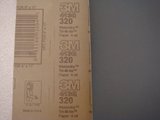
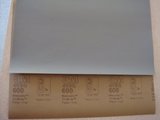
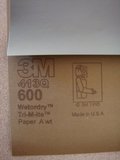
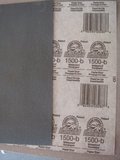
Paint; Primer, Color, Clear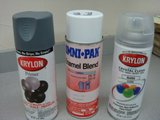
For the sandpapers you might even want a "course" grit, I'll have pictures of this one later. I found that the 320 wasn't course enough to really dig into the chrome so I used the course grit, then quickly went over it again with the 320 before spraying the primer.
As for the 3 different grits here is when you want to use them
320grit - Before primer
This provides a good base for the paint to stick to. Think of it like the foundation of a house, these scores in the surface are something that the paint goes down into and gives it more surface to grab a hold of. Too course a grit and the paint is having to "fill" the holes which isn't really what you want
600grit - After primer, after color
Again you are giving a base for the color to stick to which will make it last that much longer and be more resistant to chipping. You are also sanding away your imperfections. Sand away the drips, runs, and uneven coating. This way when you clear, it will look professional underneath. Apply enough paint so that when you sand it down you don't go back to the primer (or in the primer's case, the base)
1500-2000 (higher=better) - After clear
Now that you are onto the clear, you want a thick coat. The clear is what is really protecting you from chipping. A somewhat thick, evenly applied, sanded/layered coating is what you need for durability. Depending how many coats of clear you are going to apply, you may consider using the 600 between coats of clear and the 1500 or 2000 after your final coat. I plan to do 4-6 coats, but with clear I apply a pretty light coat. Using the 600 for me would remove a lot of the clear I just applied. The 2000 grit is able to be polished with the right buffers/polishers. However without those, a 2000 grit WILL leave swirls, thus you CAN apply coats after final sanding but must be very careful to apply it thin enough to not run, but thick enough to not have a rough spray feel.
Also, you never need to use the whole sheet at once...save your money, split the sheet up, I make one sheet into 4.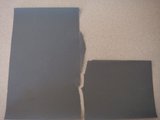
The Gas Cap
This is definitely the easiest part to remove and the easiet to work with. To remove the gas cap simply use at Tork T25 screwdriver/bit. Remove the one screw shown here: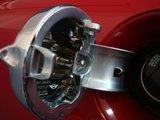
The gas cap is held into place by that one screw and a slit in cap which slides into the caps base near the part where your finger opens it.
First start by sanding it down, I started with the 320 but found it was not course enough for the results I wanted, I moved to a course grit emery paper (NOT A WET PAPER!) removed most of the chrome then finished the surface with the 320 very quickly afterwards. I decided to use the box I got from Minspeed (great place to get you color paint in a rattle can, great service too!) I cut one of the top parts of the box and folded it into a square to use something to elevate the cap from the bottom leaving room to breath and keeping the paint from getting stuck to the bottom and tearing when you go to pick it up. I wasn't able to get the sides very well, but once it was nearly dry I pulled it out, put on a rubber glove and covered the areas I needed to out side of the box.
Wet Sanding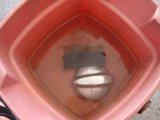
This is how it looked BEFORE I used the course grit, doesn't look like much was done huh?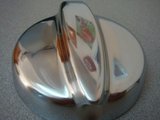
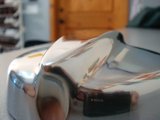
Once you are happy with the level of sanding you are ready to primer, again there were be quite a few coats needed. I used 3 and I wet sanded with 600 grit after each coat. Remember so wipe the piece down with Isopropyl Alcohol before you start to paint, this way you remove any contaminants, oils, whatever from the surface and leave something that paint will really adhere to.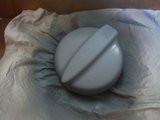
This is after the final coat of primer. I took these specific pictures so that you could see how the paint will run slightly. In all honesty, its quite hard to avoid the paint from running, especially when you DIY in your garage. But this is why we sand in-between...by sanding we remove the runs and get that perfect looking paint.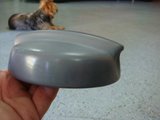
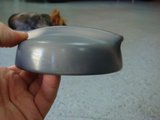
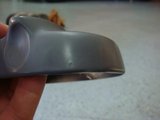
Ok, now you are ready for the color. The first coat you put on will probably look great, I also noticed that the paint from Minspeed had a very shiny gloss to it that almost made it look like a clear was not needed. But I did it anyway for longevity. Again, sand in-between each coat.
The sanding in-between coats should be a quick sand, you aren't trying to sand away the paint you just sprayed. You are removing imperfections from the last coat you sprayed, such as the orange peel look, runs, or weird cracks that appear.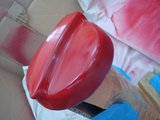
Reasons like this are why multiple coats are needed. Unless you have a true paint booth, its hard to get every surface of the object completely AND evenly.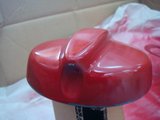
This was my setup...it works
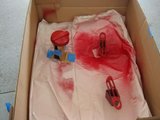
This is the after the final color coat on the gas cap. Its not really orange peel, but a lot of tiny little cracks of some sort, like I mentioned further up. A little sanding and its perfect.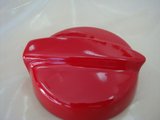
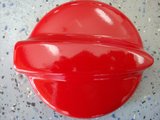
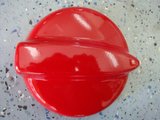
I didn't end up taking any pictures during the clear coat process, but really, its the same, just use the 1500-2000 grit between coats and you'll be fine, especially if you made it this far...the rest is intuitive. I DID NOT sand down the final coat, if you do you'll leave lots of scratches. Thus far I actually haven't done anything to it, but what you want to do is polish it with some sort of auto polish, be careful though...you don't want it looking better then your cars paint!
I don't have a close up of the gas cap finished, but it does look great. Here are some from a little bit of a distance. Again, unpolished thus far.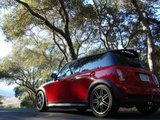
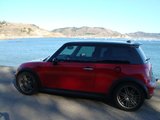
The Sidemarkers
Here is what it looks like behind your sidemarker, that round grommet at the front it what actually holds the sidemarker in, lip at the back also helps to keep it in place.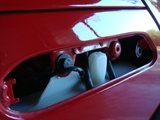
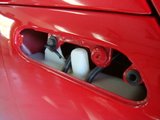
The sidemarker and the S DO come apart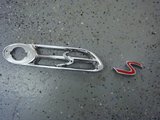
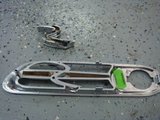
As you can see, there is a little bit of a black glue that helps hold the S to the sidemarker along with the little washer (not pictured). Scrape the glue off BEFORE you do paint the S if you intend to paint it. Otherwise just scrape it off before you put it back together and use a new glue to put it back together. I used some Loctite brand glue from Home Depot...Silicone would probably work just as well also, but I didn't have any with me when I put mine back together.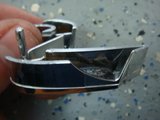
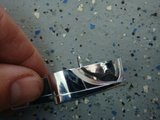
The Sidemarkers are a little different from the gas cap, they ARE plastic but they have a copper coating, and then the copper coating is chromed. I used a dremel tool and a grinding bit to sand down my sidemarkers to this level...it was taking to long by hand and I was getting frustrated. IMO, I took it too far. If you get the surface nice and rough stop there. Once the copper starts peeling you are stuck to make sure that you peel as much off that you can feel the edges. If you don't these edges will show up in the paint and can potentially peel later on after it is painted leaving you to do the work all over again.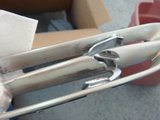
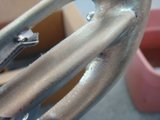
Here is what I mean by the edges showing up after you paint. After this coat of primer I sanded that area back down to make sure it was nice and smooth. I didn't want to have to deal with it later on down the line.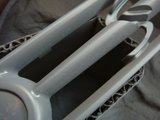
My first little setup. This little box proved to be a touch too small and made it hard to spray at the right angles to cover all the surfaces.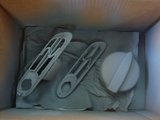
A good distance to spray from. When I was doing my final coats of color I noticed that it actually applied better a little bit closer.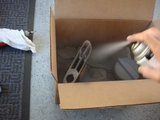
Here is a sidemarker ready for color. Notice that the entire surface looks nice a smooth. This is what you want.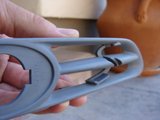
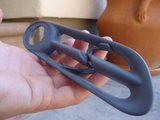
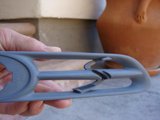
This one on the other hand is not quite ready. Even after re-sanding those areas where I peeled the copper up, it wasn't quite perfect. You don't want to be able to see any of the metal like you can about two pictures down. What I ended up doing was adding another coat of primer, a little thicker in "that" area. Not exactly the way you want to deal with this problem, but the alternatives aren't as appealing either.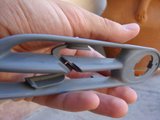
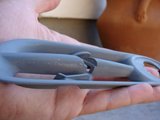
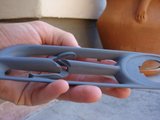
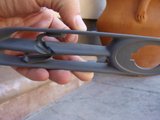
This is the same sidemarker as above with its first coat of color, its hard to see from the pics, but it smoothed out quite well.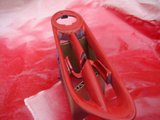
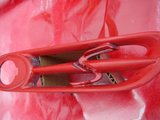
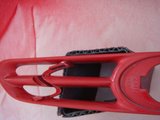
Super Glue works great for these kinds of cuts
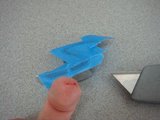
These pictures are after my final coat of color BEFORE sanding it for primer. As I mentioned, this paint as quite a gloss to it, but I added clear jut to protect it.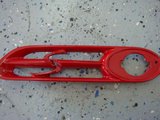
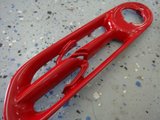
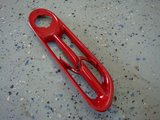
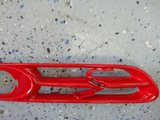
The esses were a bit of a pain. You can see what I was trying to do. The way to get the best results would be to paint the whole thing black, then mask off the out portions and paint the center red by hand. But I wanted that reflective red, so, I tried this.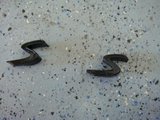
As you can see it wasn't working out too well. I would pull the tape up, and along with the tape some of the paint around the edges would come up. I didn't primer the esses, and I did a mediocre job at sanding them. As you can see, prep work matters What I ended up doing that worked OK, was using a fresh exacto blade and cutting the outline of the tape after each coat of paint, this way that border was always maintained. Some still peeled up, but it wasn't NEARLY as noticeable.
What I ended up doing that worked OK, was using a fresh exacto blade and cutting the outline of the tape after each coat of paint, this way that border was always maintained. Some still peeled up, but it wasn't NEARLY as noticeable.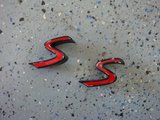
And here is the finished product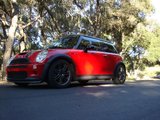
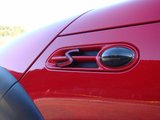
The Headlight Rings
Will likely start by the end of Nov.
The Door Handles
Not here yet

